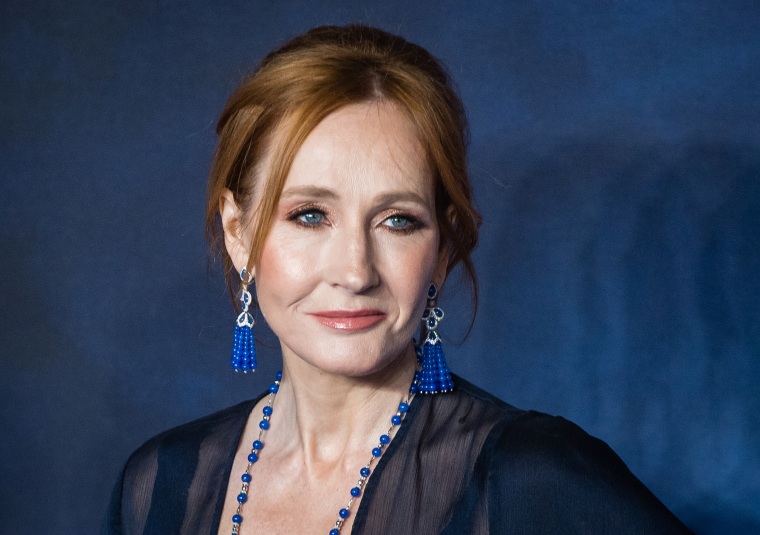One of the hardest parts of the coronavirus crisis has been the nationwide shutdown of schools. Help for harried parents is now arriving from an unexpected corner. J.K. Rowling, the almost-billionaire author of the “Harry Potter” series, has spent the last two months using her online presence to help parents get their kids to read in a project titled “Harry Potter at Home.” In April, she made all seven “Harry Potter” novels free online. In May, actors signed on to do video readings of the first novel, “Harry Potter and The Sorcerer’s Stone,” including Harry Potter himself, Daniel Radcliffe.
Now Rowling is upping the ante, releasing an entirely new children’s book, something fans and publishers alike have been waiting for her to do for over a decade.
Now Rowling is upping the ante, releasing an entirely new children’s book, something fans and publishers alike have been waiting for her to do for over a decade. “The Ickabog” is a fantasy story, set in a kingdom far away, but with a timely parable. It’s cute, but will it start the comeback Rowling has been looking for?
The good news for parents is that Rowling has recognized the inexorable need for a continuous stream of content to keep kids occupied as global quarantines stretch into the summer months. To that end, she’s turned to one of the oldest methods of publishing: the serial.
Within a couple of hours of announcing “The Ickabog’s” imminent arrival, chapters one and two, “Fred the Fearless” and “The Ickabog,” were uploaded online. Rowling has not said how many chapters will arrive weekly, though her introductory post suggested it could be as many as three at a time, stretching through the month of June with the final installment coming on July 10. Much like the “Harry Potter at Home” plan, these installments will have interactive elements. In this case, illustrating the characters in a mini-competition to have the drawings used as part of the book’s marketing. (The final product will hit bookstores and online retailers in November.)
Whether the book will be any good collectively remains to be seen, but the first two chapters are promising. Much like the first “Harry Potter” book in the mid-1990s, it is deliberately paced with the young reader in mind. The chapters aren’t very long, and the plot lines are broad. There once was a blond king, Fred, who didn’t actually do any work in running the kingdom. He had two friends who made it their life goal to keep things that way, and the non-too-bright ruler didn’t notice. Until, of course, an invisible monster started preying on his kingdom. If the description feels a bit like U.K. Prime Minister Boris Johnson (or President Donald Trump), Rowling’s not going to correct you. (Although she does claim the idea for the story came to her years ago.)
Rowling’s writing is still as punny and wordplay-filled as ever, though where in “Harry Potter” she has a lot of fun with Latin and old pagan myths, here’s she’s gone more modern. Though the resulting description of Fred’s kingdom (called Cornucopia) can feel a little bit like the author binged a lot of “The Great British Baking Show” during her writing process, there’s a point to it. Rowling is using food as a parable for class, with the rich people of Chouxville and Kurdsburg sneering at those struggling to get by in the Marshlands.
For those who grew up on “Potter” and remember the final books better than the initial ones, the first two chapters of “The Ickabog” may feel surprisingly simplistic. (Rowling’s post introducing the story said she was aiming for those ages 7-9 to be able to read the chapters to themselves.) But the first “Potter” books started off pretty easily, too. It’s not until the third novel, “Harry Potter and the Prisoner of Azkaban,” that the series began to age up with its audience, and the depth of the story Rowling had planned was revealed. “The Ickabog” is, at least for now, billed as a stand-alone novel, so it’s not clear if it’s going to mature in later iterations or stay as a simple story for kids.
But if Rowling was looking to get back to telling stories from the right side of history, this is a good start. The author has, of late, struggled to keep up with the times. The irony is that the progressive values her “Harry Potter” books championed helped push the world beyond her own middle-of-the-road liberal instincts.
In the last few years, that has made for some bad PR stemming from her support of transphobic researchers, troubled actor Johnny Depp (one of the leads in her “Fantastic Beasts” film) and her depiction of Dumbledore’s sexuality. The “Fantastic Beasts” films have also floundered enough that the third film was pushed back a year, and a professional screenwriter was hired to co-write with Rowling for the next film.
Though it seems odd to think of the highest-paid author in the world needing a comeback, Rowling could use a win, and this is probably her best chance at one. Though her attempts at adult books have been successful, “The Casual Vacancy” and “The Cormoran Strike Mysteries” series have not been good enough to drown out the naysayers. In the end, Rowling looks to be going back to what she always did best. It should be enough to delight young fans and give parents some reprieve as they face a summer without camps or holidays. Will it be enough to pull Rowling back into her fans’ good graces? Let’s take it chapter by chapter.
CORRECTION (May 27, 2020, 9:00 a.m. ET): Headlines on an earlier version of this article misspelled the subject's last name. She is J.K. Rowling, not Rowing.


